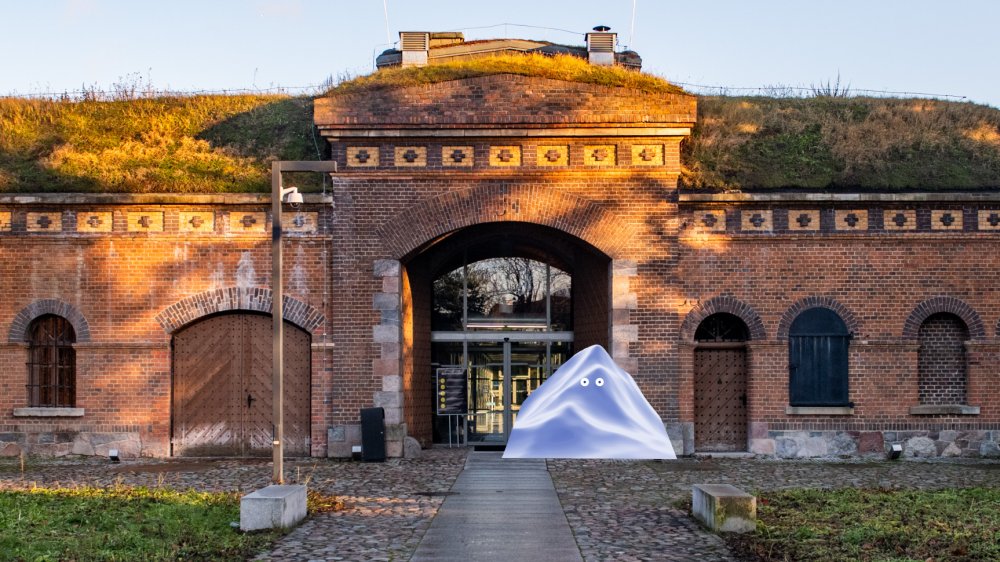Sven Ice Sheet and the Warta Team

Śluza Gallery isn't just about showcasing the history of Poznań and its people; it's also about celebrating the natural environment. This time, the curators tackled a challenging subject: the evolution of landscapes in and around today's Poznań over the centuries, with glaciations playing a pivotal role. Most of us probably recall those geography classes, where the intricacies of geomorphological processes seemed like frustratingly abstract concepts. To truly grasp them, we need more than vague explanations and meaningless illustrations. The exhibition organisers aren't just delving into the distant past. They are telling the story of how rivers and human activities have shaped the land. Without considering these two factors, any account of how land in the area of modern Poznań came to be would feel woefully incomplete. But how do you convey such a wealth of knowledge in a way that satisfies the audience and offers additional insights?
We decided to give the main characters - namely, the ice sheet and the rivers of the Warta Valley - personalities akin to athletes. Anna Pikuła, exhibition curator with the Poznań Heritage Centre, believes this adds a sporty dimension to the exhibition's storytelling. So, when visitors step in, they are introduced to Land Ice, dubbed Sven for its Scandinavian roots. The geomorphological transformations it brings about will be likened to sporting triumphs, each one commemorated with a diploma detailing the circumstances under which it was achieved and its impact on the landscape.
The Warta Team, on the other hand, will go head-to-head with both Sven and human competitors in these sports contests. The layout of the space has been arranged by Wojciech Luchowski to a graphic concept developed by Agata Kulczyk.
At Śluza Gallery, exhibitions are all about the visitor's journey. As visitors wander through the displays, they get to engage with educational features to actively soak up information. That same principle drives this exhibition. Visitors can anticipate not just interactive stations, but also a unique glacier gym where they can do simple exercises that mirror the mighty forces of nature. Each activity will tie into a specific geomorphological process, shedding light on its role in shaping the land around us, which still holds plenty of mysteries. It's all about making the knowledge more palatable and the information more easily retained.
What is the intended audience for the exhibition? While it is geared toward caregivers with children, it is open to anyone keen on exploring landscape formation from a fresh, unconventional perspective to gain a deeper understanding. Alongside the exhibition, there will be kid-friendly activities, workshops, and trips to jazz up the content and demystify the subject matter.
For those concerned that simplifying the language and adding educational attractions might water down the exhibition's content, rest assured that several experts in the field collaborated on the project to prevent that from happening. One such expert is Dr. Paweł Wolniewicz from the Faculty of Geographic and Geological Sciences at Adam Mickiewicz University of Poznań, who served as the technical consultant for the exhibition.
"Our goal is for visitors to enjoy themselves and benefit from our offerings. We hope it will help them notice things in their surroundings that they might have overlooked before. Ideally, they'll be able to connect what they learn here with the real-world places they visit and live in", explains Anna Pikuła.
Whether the exhibition can outshine standard textbooks will be revealed on 12 April, when it opens its doors. With spring and the holiday season approaching, now is the perfect time for reflection on environmental matters.
Justyna Żarczyńska
translation: Krzysztof Kotkowski
- Exhibition: What Can a Continental Glacier Do?
- Śluza (Lock) Gallery, open from 12 April to 1 September, free admission
© Wydawnictwo Miejskie Posnania 2024
See more

From One Celebration to Another

Christmas Markets and Fairs with Attractions

Truly Festive Vibes



